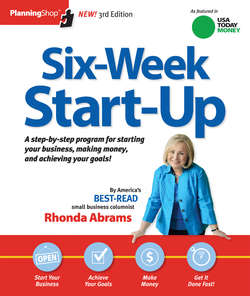Читать книгу Six-Week Start-Up - Rhonda Abrams - Страница 81
На сайте Литреса книга снята с продажи.
Define your target market
ОглавлениеIf I asked you to tell me whom your customers—or potential customers—are, how would you answer?
Let’s say you’ve created a new breakfast cereal for children: “Yummy Tummy Oats.” You’ve packed it with good things: vitamins, minerals, great nutrition. You figure you’re going to wipe out the competition because every parent wants a nutritious breakfast for their child.
There’s only one problem: Who’s your customer? Is it Mom or Dad pushing the grocery cart down the cereal aisle, comparing the nutrition information on the side of the box?
Or is it the end-user (the “consumer”) of your product—the kid—who couldn’t care less about nutrition but wants cereal that tastes sweet, has cartoon characters on the package, and packs toys inside?
Or is it the cereal buyer for the grocery store chain? He cares little about nutrition or cartoon characters. His concerns are more down-to-earth: how much money you’re going to spend on advertising, how quickly you’ll replenish inventory, and whether you’ll pay him a “stocking fee” to obtain shelf space. Parents and children aren’t going to have a chance to buy or eat “Yummy Tummy Oats” if you don’t meet the supermarket buyer’s needs first.
On top of that, if you don’t have your own sales and distribution force, you may first have to find a cereal distributor and convince them to carry your product.
The parent. The child. The store buyer. The distributor. That’s a lot of “customers” you have to satisfy with each box of “Yummy Tummy Oats.”
You give yourself a competitive edge by thinking of each of these “customers” and planning for their needs and motivation.
Being responsive to the details that are important to distributors, retailers, sales representatives, and others helps you plan your marketing materials, operations, packaging, even the nature of the product itself. If yours is an industry where sales reps must purchase their samples, for instance, you can set yourself apart by supplying samples free. If retailers can fit more square packages on a shelf than round packages, you’ll be more competitive by choosing a square package.
Even if you think you’ll market “directly to consumers” online, you’ll discover there are still many entities between you and your “customer” in cyberspace. In the case of “Yummy Tummy Oats,” your intermediary might be the online grocery store, the health food site, the children’s site, or the search engine that will help customers find you. So you’ll still have more than just parents and kids to please.
As you begin to define your customers, both the end-users and the intermediaries, describe all of their various attributes: age, location, industry, purchasing patterns, buying sensitivities, “psychographics” (what motivates them), and the like. Be realistic about how people actually behave—not how they should behave.
Use the worksheets on pages 55 and 56 to describe your customers. The first worksheet allows you to consider the types of “customers” you have. The second worksheet gets you started describing the characteristics of each of those. You may need to make copies of the customer profile worksheet—one for each type of “customer.”
